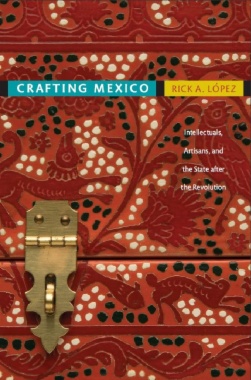After Mexico’s revolution of 1910–1920, intellectuals sought to forge a unified cultural nation out of the country’s diverse populace. Their efforts resulted in an “ethnicized” interpretation of Mexicanness that intentionally incorporated elements of folk and indigenous culture. In this rich history, Rick A. López explains how thinkers and artists, including the anthropologist Manuel Gamio, the composer Carlos Chávez, the educator Moisés Sáenz, the painter Diego Rivera, and many less-known figures, formulated and promoted a notion of nationhood in which previously denigrated vernacular arts—dance, music, and handicrafts such as textiles, basketry, ceramics, wooden toys, and ritual masks—came to be seen as symbolic of Mexico’s modernity and national distinctiveness. López examines how the nationalist project intersected with transnational intellectual and artistic currents, as well as how it was adapted in rural communities. He provides an in-depth account of artisanal practices in the village of Olinalá, located in the mountainous southern state of Guerrero. Since the 1920s, Olinalá has been renowned for its lacquered boxes and gourds, which have been considered to be among the “most Mexican” of the nation’s arts. Crafting Mexico illuminates the role of cultural politics and visual production in Mexico’s transformation from a regionally and culturally fragmented country into a modern nation-state with an inclusive and compelling national identity.
- Contents
- List of Illustrations
- Acknowledgments
- Introduction: Nation Formation, Popular Art, and the Search for a Mexican Aesthetic
- Part I. Indianness and the Postrevolutionary Mexican Nation
- 1. Ethnicizing the Nation: The India Bonita Contest of 1921
- 2. Popular Art and the Staging of Indianness
- 3. Foreign-Mexican Collaboration, 1920–1940
- 4. The Postrevolutionary Cultural Project, 1916–1938
- 5. The Museum and the Market, 1929–1948
- 6. Formulating a State Policy toward Popular Art, 1937–1974
- Part II. Alternative Narratives of Metropolitan Intervention: The Artisans of Olinalá, Guerrero
- 7. The “Unbroken Tradition” of Olinalá from the Aztecs through the Revolution
- 8. Transnational Renaissance and Local Power Struggles, 1920s to 1940s
- 9. The Road to Olinalá, 1935–1972
- Conclusions
- Notes
- Bibliography
- Index

